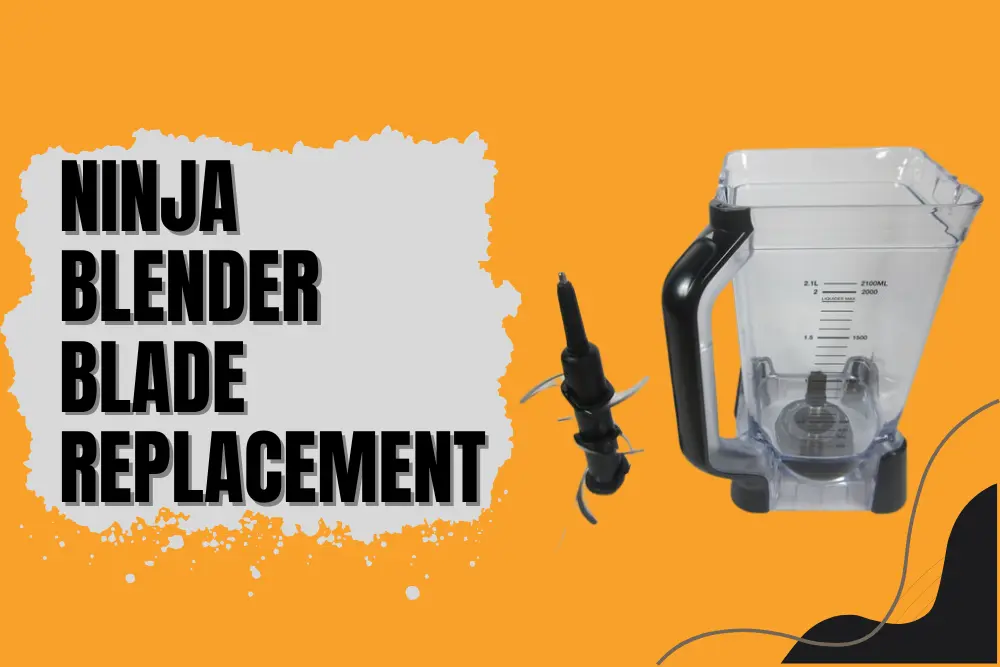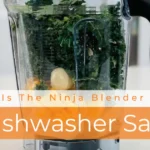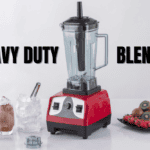Are you facing the hassle of a dull or broken blade in your Ninja blender? Fear not, because I’ve got just the solution for you: Ninja Blender Blade Replacement! Picture this: you’re all set to whip up your favorite smoothie or sauce, only to find your blender’s blade isn’t up to the task. It’s frustrating, isn’t it? But worry not, because with Ninja blender blade replacement, you can swiftly swap out that old blade for a brand new one, restoring your blender to its full blending prowess in no time.
The problem is clear: a worn-out or damaged blade can severely hamper your blending experience, leading to uneven blending, chunks in your smoothies, or even complete blender breakdown. But with Ninja blender blade replacement, you’re not just getting a new blade; you’re getting a quick and easy fix to this common kitchen dilemma. No more struggling with ineffective blending or resorting to manual chopping – simply replace the blade, and you’re back to blending perfection. And once your Ninja blender is back in action, why not try out a new ninja smoothie recipe to celebrate? It’s a delicious way to put your blender to the test and enjoy a refreshing treat at the same time!
With Ninja blender blade replacement, say goodbye to blending woes and hello to smooth, effortless blending every time. Don’t let a faulty blade slow you down in the kitchen – make the switch today and rediscover the joy of hassle-free blending with your Ninja blender. And once you have your blender in top-notch condition, why not try out a new ninja creamy recipe? It’s the perfect way to test out your blender’s capabilities and treat yourself to a delicious and creamy delight!
Ninja Blender Blade Replacement
Do you know that a worn-out or damaged blade can seriously affect your Ninja blender’s performance? With Ninja Blender Blade Replacement, you can easily swap out your old blade for a new one, restoring your blender to its full blending potential. Say goodbye to uneven blending and hello to smooth, hassle-free blending with this convenient solution.
Common Issues With Worn-Out Or Damaged Blender Blades
Start with common issues with worn-out or damaged blender blades, know that they can significantly impact your blending experience, causing frustration and inconvenience. Let’s delve into some of the typical problems you might encounter when your blender blades are past their prime.
Uneven Blending
One of the most noticeable issues with worn-out or damaged blender blades is uneven blending. Instead of achieving a smooth consistency, you might end up with chunks or bits of unblended ingredients in your mixture. This inconsistency can affect the taste and texture of your recipes, leading to dissatisfaction with the final result.
Increased Blending Time
As blender blades wear down, they become less effective at pulverizing ingredients efficiently. Consequently, you may find yourself spending more time blending than usual to achieve the desired smoothness. Not only does this extend the preparation time for your meals or beverages, but it also puts additional strain on your blender motor.
Strain on Motor
A worn-out or damaged blade can place undue stress on the blender’s motor as it struggles to compensate for the blade’s inefficiency. This strain not only reduces the lifespan of your blender but also increases the risk of overheating and potential motor burnout. Ignoring this issue can lead to costly repairs or the need for a replacement blender altogether.
Incomplete Mixing
When blender blades are no longer sharp or properly aligned, they may fail to thoroughly mix ingredients, leaving pockets of unmixed components in your recipes. This incomplete mixing can compromise the flavor and consistency of your dishes or beverages, resulting in a less enjoyable culinary experience.
Risk of Accidents
Worn-out or damaged blender blades pose a safety hazard in the kitchen. Dull blades are more prone to breakage or detachment during operation, increasing the risk of accidents such as spills, splatters, or even injuries from flying debris. Ensuring that your blender blades are in good condition is essential for maintaining a safe cooking environment.
Importance Of Maintaining A Sharp And Functional Blade For Optimal Blending
Now that you have an idea about the common issues with worn-out or damaged blender blades, let’s explore the importance of maintaining a sharp and functional blade for optimal blending.
Efficiency
A sharp and functional blade ensures efficient blending by swiftly breaking down ingredients into a smooth consistency. This efficiency not only saves you time in the kitchen but also produces better results, whether you’re making smoothies, sauces, or soups.
Consistency
Maintaining a sharp blade helps achieve consistent blending results every time. With evenly chopped ingredients, you can create uniform textures and flavors in your recipes, enhancing the overall dining experience.
Preservation of Nutrients
Blending with a sharp blade minimizes the oxidation of ingredients, preserving their nutritional value. By maintaining the integrity of fruits, vegetables, and other components, you can maximize the health benefits of your blended creations.
Reduction of Strain
A sharp blade reduces strain on the blender motor, prolonging its lifespan and preventing overheating. By effortlessly slicing through ingredients, the blade allows the motor to operate more efficiently, minimizing wear and tear on internal components.
Versatility
A functional blade expands the range of recipes you can prepare with your blender. From crushing ice to pulverizing tough ingredients, a sharp blade empowers you to experiment with various culinary creations and achieve desired textures with ease.
Safety
A sharp blade reduces the risk of accidents in the kitchen. Dull blades are more prone to slippage or breakage during operation, increasing the likelihood of spills, splatters, or injuries. Maintaining a sharp blade ensures safer blending practices for you and your loved ones.
Overview Of The Ninja Blender Blade Replacement Product
Let’s get some replacement then! Here’s an overview of the Ninja Blender Blade Replacement product:
Compatibility
Ninja Blender Blade Replacement is designed to be compatible with a wide range of Ninja blender models, ensuring versatility and accessibility for users with different blender models.
Quality Construction
Crafted from durable materials, the replacement blades are built to withstand the rigors of blending, ensuring long-lasting performance and reliability.
Easy Installation
Replacing the blade is a breeze with Ninja Blender Blade Replacement. With simple installation instructions provided, you can effortlessly swap out your old blade for a new one, getting your blender back to its optimal blending capabilities in no time.
Sharpness and Efficiency
The replacement blades feature sharp, precision-engineered edges that effortlessly slice through ingredients, ensuring efficient blending and consistent results with every use.
Enhanced Blending Performance
By replacing your worn-out or damaged blade with Ninja Blender Blade Replacement, you can restore your blender’s blending performance to its full potential. Say goodbye to uneven blending and hello to smooth, effortless blending with this convenient solution.
Cost-Effective Solution
Instead of investing in a new blender altogether, Ninja Blender Blade Replacement offers a cost-effective alternative to extend the lifespan of your existing blender. With affordable pricing and reliable performance, it’s a smart investment for any kitchen.
Step-By-Step Guide On How To Replace The Blade In Your Ninja Blender
Here’s a step-by-step guide on how to replace the blade in your Ninja Blender:
Gather Your Tools
Before starting, make sure you have the necessary tools handy. You’ll typically need a screwdriver (usually Phillips head) to remove the blender blade assembly.
Unplug Your Blender
For safety purposes, always unplug your blender from the power source before attempting any maintenance or replacement.
Remove the Blender Jar
Detach the blender jar from the base of the blender and set it aside. This will provide you with easier access to the blade assembly.
Remove the Blade Assembly
Locate the blade assembly at the bottom of the blender jar. Depending on the model, the blade assembly may be screwed onto the bottom of the jar or simply twist-locked into place. Use your screwdriver to unscrew the blade assembly or follow the manufacturer’s instructions for unlocking it.
Dispose of the Old Blade
Once the blade assembly is removed, dispose of the old blade properly. Be careful when handling sharp blades to avoid injury.
Prepare the Replacement Blade
If you haven’t already, unpack and inspect the new blade to ensure it’s free from any defects or damage.
Install the Replacement Blade
Carefully place the replacement blade onto the blender jar, making sure it aligns properly with the grooves or threads for attachment. Follow the reverse process of how you removed the old blade to securely attach the replacement blade assembly.
Tighten the Blade Assembly
If the replacement blade assembly requires screwing in, use your screwdriver to tighten it securely. Ensure it’s snug but not overly tight to avoid stripping the threads.
Reattach the Blender Jar
Once the replacement blade is securely in place, reattach the blender jar to the base of the blender.
Test the Blender
Plug in your blender and perform a test run to ensure the replacement blade is installed correctly and functioning properly. Blend a small batch of ingredients to verify smooth operation and consistent blending performance.
Tips For Prolonging The Lifespan Of Your Blender Blades
Here are some tips for prolonging the lifespan of your blender blades:
Regular Cleaning
After each use, thoroughly clean your blender blades to remove any food residue or buildup. Use warm, soapy water and a brush to gently scrub the blades, ensuring they remain free from debris that can dull or damage them over time.
Avoid Overloading
To prevent strain on the blades and motor, avoid overloading the blender with too many ingredients at once. Follow the manufacturer’s guidelines for maximum capacity and use smaller batches if necessary.
Use Liquid Base
When blending solid ingredients, always start with a liquid base, such as water, juice, or milk. This helps lubricate the blades and facilitates smoother blending, reducing wear and tear on the blades.
Cut Ingredients into Smaller Pieces
To reduce the workload on the blender blades, chop larger ingredients into smaller pieces before adding them to the blender jar. This minimizes the amount of effort required to blend, prolonging the lifespan of the blades.
Avoid Hard or Frozen Ingredients
While many blenders are capable of blending ice or frozen fruits, excessive use of hard or frozen ingredients can damage the blades over time. Allow frozen ingredients to thaw slightly or use a blender specifically designed for crushing ice.
Alternate Ingredients
To prevent overheating, alternate between blending dense or hard ingredients with softer ones. This gives the blender motor and blades a chance to cool down between batches, prolonging their lifespan.
Handle with Care
Avoid banging or dropping the blender jar, as this can damage the blades or jar assembly. Handle the blender with care when assembling, disassembling, or transporting it to prevent accidental damage.
Store Properly
When not in use, store your blender in a dry, clean area away from moisture or humidity. Ensure the blender jar and blades are completely dry before storing to prevent rust or corrosion.
Inspect Regularly
Periodically inspect the blender blades for signs of wear, such as dullness, chipping, or corrosion. Replace the blades as needed to maintain optimal blending performance and safety.
Follow Manufacturer’s Guidelines
Lastly, always follow the manufacturer’s instructions and recommendations for care, maintenance, and usage of your blender. Adhering to these guidelines can help ensure the longevity of your blender blades and the overall performance of your appliance.
Conclusion
In conclusion, transforming your blender with Ninja Blender Blade Replacement offers a simple yet effective solution to common blending woes. By replacing worn-out or damaged blades with precision-engineered alternatives, you can restore your blender’s performance, ensuring smooth, efficient blending every time.
With easy installation, compatibility with various Ninja blender models, and the promise of enhanced blending capabilities, Ninja Blender Blade Replacement empowers you to continue creating delicious recipes with confidence. Don’t let a dull blade slow you down in the kitchen – make the switch today and experience the difference for yourself.
FAQs
Can You Replace Ninja Blades?
Yes, you can replace Ninja blades with Ninja Blender Blade Replacement kits.
Do All Ninja Blenders Use The Same Blade?
No, not all Ninja blenders use the same blade; blade designs can vary between models.
Can I Sharpen My Ninja Blender Blades?
No, Ninja blender blades are not designed to be sharpened; it’s recommended to replace them when dull or damaged.
Can A Ninja Blender Be Repaired?
Yes, Ninja blenders can often be repaired through manufacturer-approved service centers or by purchasing replacement parts.






